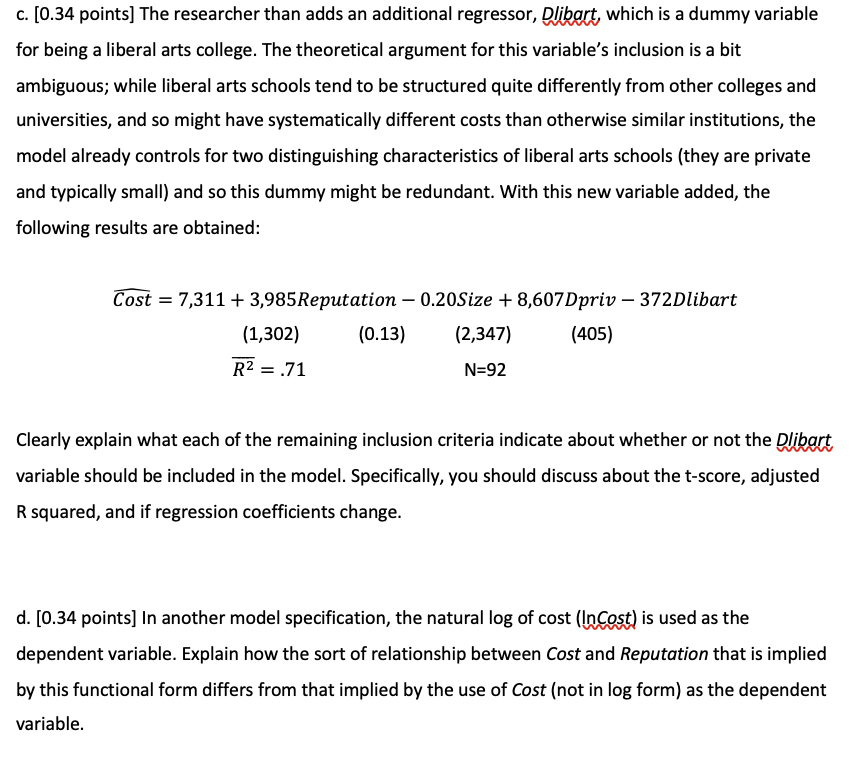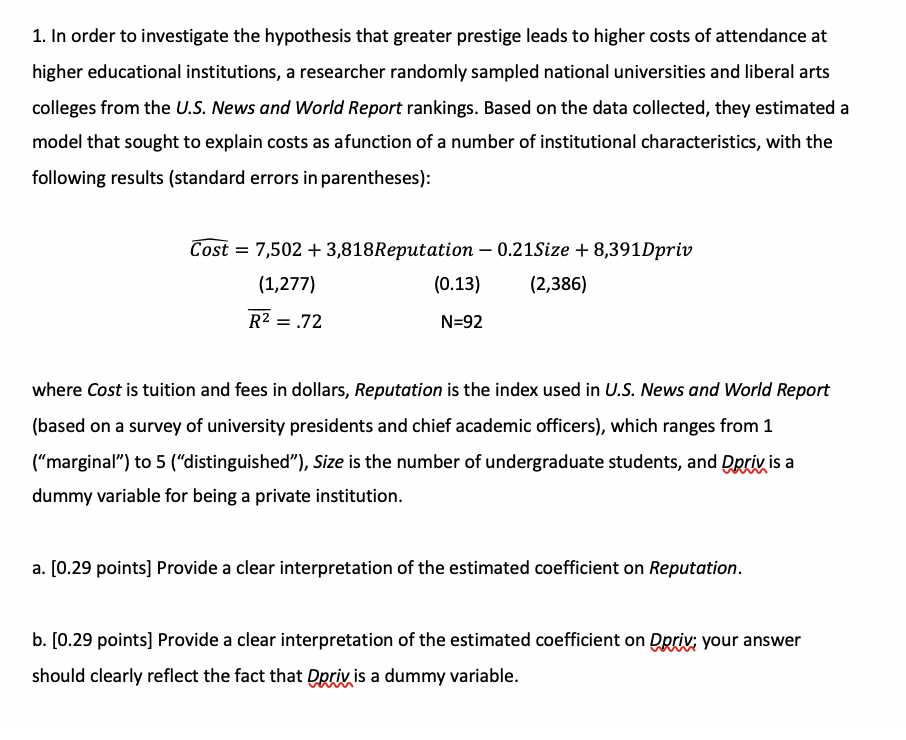c. [0.34 points] The researcher than adds an additional regressor, gym which is a dummy variable for being a liberal arts college. The theoretical argument for this variable's inclusion is a bit ambiguous; while liberal arts schools tend to be structured quite differently from other colleges and universities, and so might have systematically different costs than otherwise similar institutions, the model already controls for two distinguishing characteristics of liberal arts schools {they are private and typically small) and so this dummy might be redundant. With this new variable added, the following results are obtained: Cost = 7,311 + 3,985Reputation 0.205ize + 8,607Dpn'v 372Diibart {1,302} {0.13) (2,347) {405) F = .71 N=92 Clearly explain what each of the remaining inclusion criteria indicate about whether or not the RM variable should be included in the model. Specically, you should discuss about the t-score, adjusted R squared, and if regression coefficients change. d. [0.34 points] In another model specication, the natural log of cost {W is used as the dependent variable. Explain how the sort of relationship between Cost and Reputation that is implied by this functional form differs from that implied by the use of Cost (not in log form} as the dependent variable. 1. In order to investigate the hypothesis that greater prestige leads to higher costs of attendance at higher educational institutions, a researcher randomly sampled national universities and liberal arts colleges from the U.S. News and World Report rankings. Based on the data collected, they estimated a model that sought to explain costs as afunction of a number of institutional characteristics, with the following results (standard errors in parentheses): Cost = 7,502 + 3,818Reputation - 0.21Size + 8,391Dpriv (1,277) (0.13) (2,386) R2 = .72 N=92 where Cost is tuition and fees in dollars, Reputation is the index used in U.S. News and World Report (based on a survey of university presidents and chief academic officers), which ranges from 1 ("marginal") to 5 ("distinguished"), Size is the number of undergraduate students, and Deriv is a dummy variable for being a private institution. a. [0.29 points] Provide a clear interpretation of the estimated coefficient on Reputation. b. [0.29 points] Provide a clear interpretation of the estimated coefficient on Dpriv; your answer should clearly reflect the fact that Dpriv is a dummy variable








